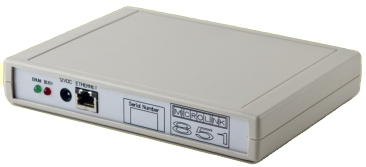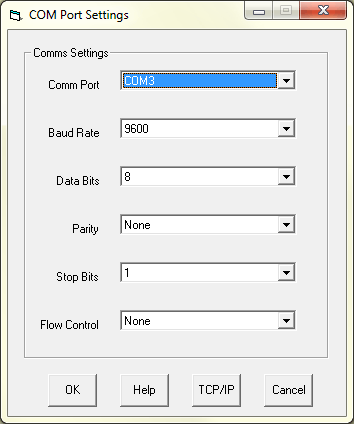Monitor - ISSN 1472-0221
The Newsletter for Data Acquisition and Control
Issue 283 August 2022
Welcome to Monitor, thank you for subscribing. The month, all about logging pH.
Contents
* How to measure pH
* Your Data Acquisition Questions Answered
How to measure pH
Web link: https://www.windmill.co.uk/pH-measuring.html
What do you need to consider when interfacing pH measurements to a computer?
pH Electrode and pH Probe | pH Meter | Computerised pH measurements | Trouble-Shooting pH Measurement Systems
pH Electrode and pH Probe

There are several ways to measure pH, including pH electrodes, pH probes and pH meters. When using pH electrodes, the pH of a known reference solution is compared to the pH being measured. Two electrodes are used: a glass measurement electrode and a reference electrode.
The measurement electrode comprises a glass bulb attached to a glass stem. The bulb is a pH sensitive membrane filled with a conducting buffer solution. A silver wire is enclosed in the glass.
The difference in pH between the solutions inside and outside the thin glass membrane creates an electrochemical force (voltage) proportional to the difference in pH. This is passed via the silver wire. The reference electrode has a stable potential and also features a silver wire, enabling a complete circuit to be made and the voltage generated by the glass electrode to be measured.
The measurement and reference electrode may be individual and separate, or may be combined into one probe. (There may also be a temperature compensating electrode.) Individual electrodes are less practical than a combined probe, but may be more precise.
The probe may be connected to a pH meter that displays the current pH reading.
pH Meter
A pH meter is a measuring device which displays the pH of a sample. It comprises a pH electrode connected to a meter that measures and displays the pH reading. pH meters range from simple pen-like devices to laboratory instruments with computer interfaces.
Interfacing pH Electrodes and Probes
To connect a pH electrodes to a computer you need a data acquisition device. This unit links the electrodes to the computer, via one of the computer's communication ports: Ethernet, USB or RS485 for example. You connect the electrodes to the DAQ device. The device then regularly takes pH readings and passes them to the computer.
pH electrodes have a very high output impedance and you cannot just connect them to a normal voltage input on your data acquisition unit. You will need instead to choose a DAQ unit that will amplify the signal to the appropriate level. For example, our small, portable, Microlink 851-pH unit - which plugs into the PC's Ethernet port - has its own pH conditioning unit. The Microlink 851-pH uses an integrating Analogue-to-Digital converter which reduces internal noise, and a differential amplifier which helps remove external noise. (See below for tips on trouble-shooting noisy systems.) The Microlink also lets you monitor temperature, flow, level, gas concentration, resistance, etc.

Interfacing pH Meters
What if you wish to connect a pH meter to the PC? This will often have an RS232 or USB interface. This means that you can connect it to the USB port or serial COM on your computer, either directly or via a USB-RS232 adaptor.
You will also need some software to collect the data from the pH meter: software like the Windmill COMIML (free to Monitor readers).
The Windmill software regularly collects the pH readings, every 5 seconds say, and saves them on the computer's hard disk. Windmill can also show live charts of the data, pass data in real-time to other programs like Excel and collect pH data alongside other data such as temperature or flow rate.
Trouble-Shooting pH Measurement Systems
pH monitoring systems are very sensitive and prone to interference. Small current or voltage surges can cause large fluctuations in readings.
Here are some simple tests that you can follow to determine the cause of pH (or other) measurement problems. We've used the Microlink 851-pH ethernet and internet hardware as an example but many of the tips also apply to other manufacturers' systems. Work through the tests one-by-one, eliminating sources of error as you go.
- Check that the Microlink is working
properly. First remove other factors in the system that
might be causing the problem, then check the
Microlink itself.
- Remove any power signal conditioner. This provides surge protection and noise filtering. It should remove interference from other equipment but a faulty one could cause its own problems.
- Move the Microlink to another location. If you are using it in a laboratory for example, take it home.
- Connect the Microlink to a different laptop running on battery power, not on mains power.
- Now you can test whether the Microlink is the source
of the noisy, fluctuating, data. Connect together
the first positive input pin, the first negative
input pin and the 0 V input pin. With the
Microlink 751 these inputs are on pins 20, 1 and 19.
You could use paperclips to connect the three pins.
Leave all other inputs unconnected.
As you have now shorted out the Microlink, if it is working correctly it will produce a reading of zero. If not the fault lies with the Microlink and you should contact Technical Support and send the unit back. If the reading is zero then the problem is very unlikely to be caused by the Microlink and you can go on to step 2.
- Once you have eliminated the DAQ unit as the source of the fault, test the power supply to the computer. Plug the laptop into the mains - the reading should still be zero.
- Reconnect any power signal conditioner. Again, check that the reading is zero.
- Test the probes one-by-one. Place a pH probe in a known solution and see if the reading is as expected. Keeping the signal wires short and far away from electrical machinery helps reduce noise. You may also need to clean, or even change, your probes.
- Move everything back to the original location. If the readings become erratic go through the tests again.
- Disconnect from the laptop and connect to the original computer. Again, if you now get noisy readings repeat the tests.
- Finally make your measurements in a real situation.
Discovering at which stage the problem occurs will let you identify the source and take remedial action.
Your Data Acquisition Questions Answered: What are the Modbus settings?
Question
"What are the Baud Rate and Register values of Windmill Data communication system?".
Answer
Windmill has a range of settings to be compatible with many Modbus devices. Use the free comDebug software to enter the baud rate and register values needed by your devices. You can choose a baud rate from 110 to 115200 bits per second. Register values can be anything required.

Subscribers to this Monitor newsletter can download a free copy of the full suite of Windmill software - email monitor@windmillsoft.com for details.
More Information
Reading Modbus devices with Windmill Software